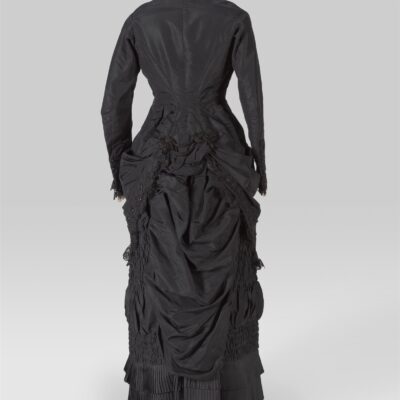
EFHA World 08.09.2023
30.04.2020
1900sEuropean fashionfashion exhibition
A column highlighting the marvels each object can show through its history. We believe that objects do have a voice, and we are here to hear them speak.
Objects embody memories. They have the ability to tell stories, about the social, political, cultural and technological environment they were originated in. Objects are the material traces of our past, and can help us to understand our shared history and look more consciously into the present and the future.
Evening dress, ca. 1909–10
Here is an evening dress that dates back to the beginning of twentieth century. It features a lavish embroidery made by hand, and the sequins are made of cellulose nitrate.
The first experiments with synthetic fibres took place in the nineteenth century as a substitute for expensive natural materials. Cellulose nitrate was first discovered in 1850 by Alexander Parkes, who named it Parkesine.
From the 1880s on, it was commonly used in photographic film and as an alternative to expensive natural materials, such as mother of pearl, tortoiseshell and bone. this is why it was also taken up by the fashion industry, to recreate the effect of more precious and expensive materials on dresses and accessories, making new styles available to a larger public.
The advantage of cellulose nitrate sequins compared to sequins made from other materials was not just the price, but the possibility of manipulating the size, thickness and colour.
The dress belongs to the collection of Kunstmuseum Den Haag. It is now on display in SMUK, the exhibition dedicated to embroidery and decoration in fashion organised by Modemuseum Hasselt.